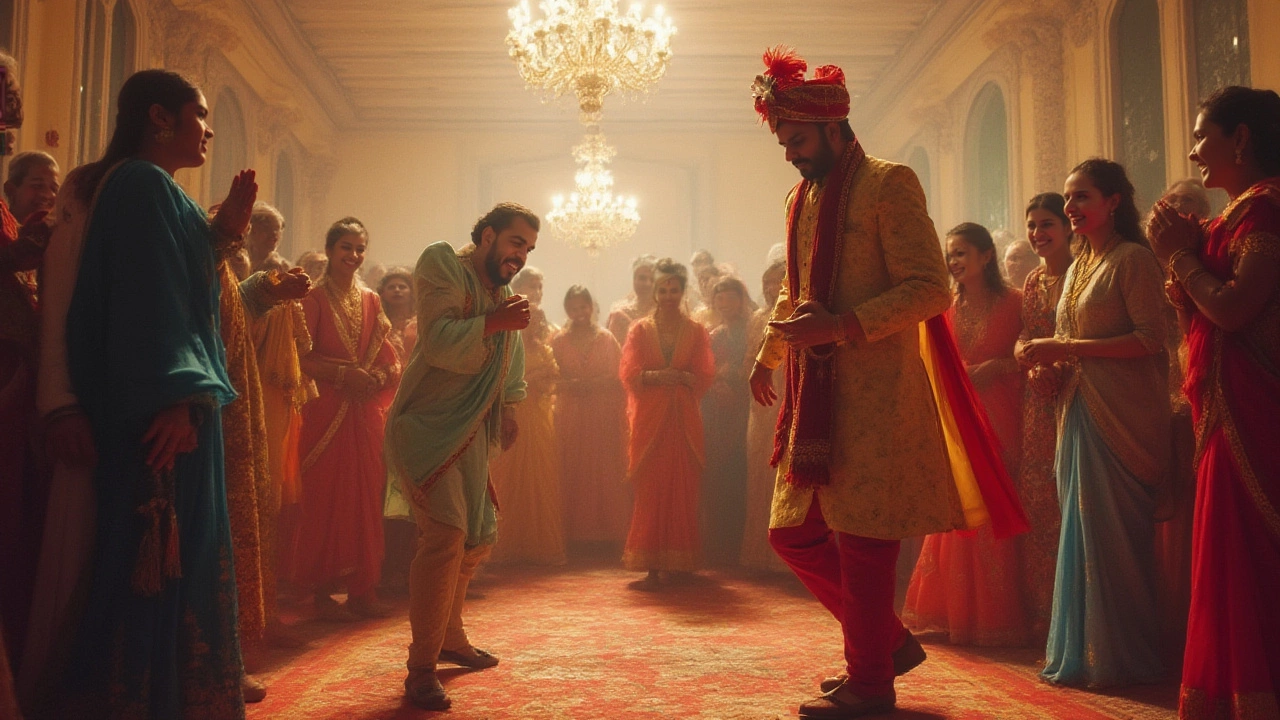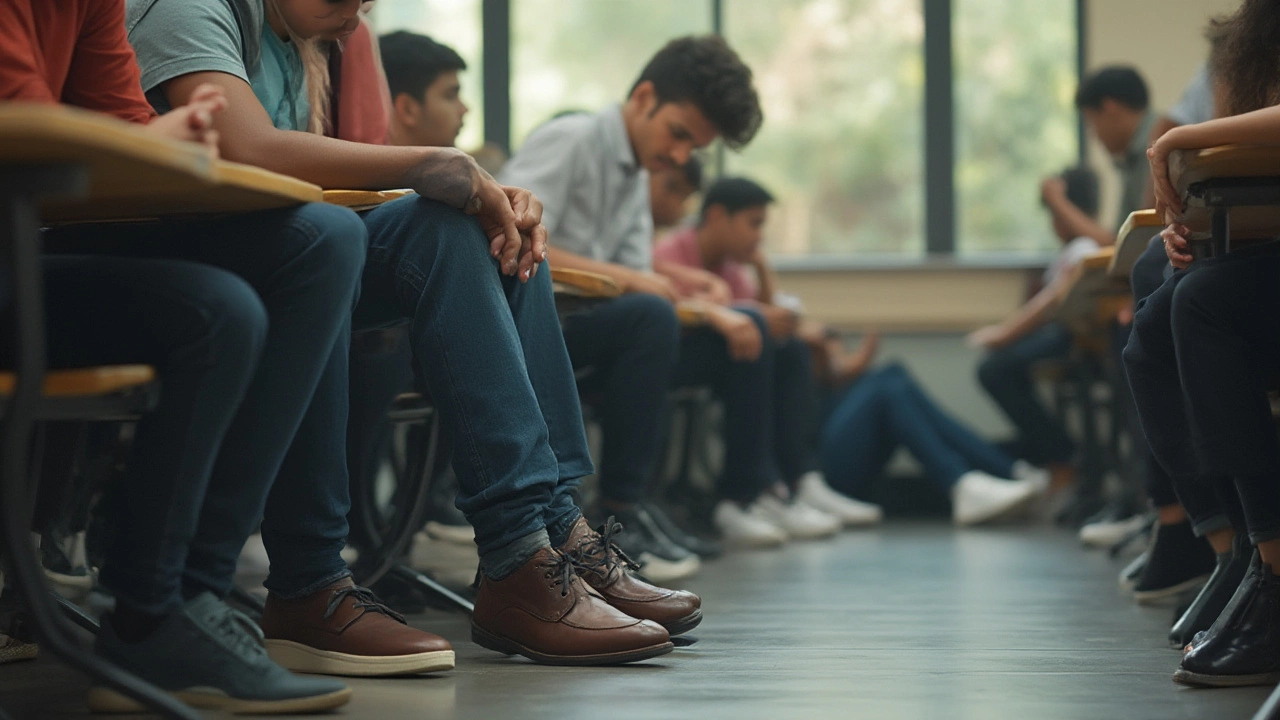Ever noticed how some people swear by leather shoes, no matter the situation? It’s a classic move, sure, but sometimes, going with leather just doesn’t cut it. Leather shoes look sharp, feel solid, and can boost your confidence. But step into a downpour or a muddy field and suddenly those prized Oxfords turn into a regret. Knowing when to skip the leather saves you money, keeps your feet happy, and spares you from awkward style mishaps. There’s a time for everything—including stepping away from those polished pair of brogues. So let’s break down the practical reasons, unexpected pitfalls, and style traps that make leather shoes a bad choice at the wrong moment.
Weather Warnings: Why Rain, Snow, And Heat Spell Trouble For Leather
Most leather shoes are made for sidewalks, not puddles. Step out during a summer storm and you’ll find out in minutes—leather and water just don’t mix. The moment it gets soaked, leather loses its structure fast. That sleek finish can bloat, shrink, or develop weird spots; and don’t even get me started on the long-term damage. In damp climates, owning more than one pair is a good call, because once that leather gets drenched, it takes ages to dry. And harsh drying (think: sticking them near a heater) makes things even worse by cracking the surface for good.
Ever heard of “salt stains?” Northern winters bring more than just cold weather—they dump road salt everywhere. Leather shoes pick up these stains like magnets, especially when trudging through slushy sidewalks. No shoe polish on earth brings back that first-day shine after a salty winter. Even when it’s sizzling hot, leather can backfire. Sunlight fades dye, stiffens uppers, and the confined structure means your feet can practically bake in there. In fact, dermatologists warn that sweaty feet stuck in leather can trigger all kinds of issues—athlete’s foot, odor, even blisters. When the weather looks rough or weirdly hot, reach for sneakers or something synthetic. Leave the leather for milder days.
Physical Activities and Unexpected Events: Where Comfort and Safety Matter Most
Running to catch a train, exploring city parks, or attending outdoor festivals? Leather shoes just aren’t made for that hustle—they’re stiff, have little shock absorption, and don’t provide the grip you need on unpredictable surfaces. Wearing leather shoes to a barbecue in the park or an outdoor concert is asking for sore feet and potentially ruined shoes. Even casual leather styles with rubber soles can’t compare to the support and flexibility of well-made athletic shoes or sandals.
At weddings or formal gatherings, everyone loves to put on their best. But think twice if the invite says “garden party” or “beach celebration.” Sand, dirt, and grass are arch-enemies for fine leather. One accidental step on soft ground can result in mud stains or sunk heels. Safety is another factor: for workplaces or situations where there's oil, chemicals, or risk of heavy objects falling on your feet, leather dress shoes aren’t equipped for protection. There’s a reason boots with safety features exist.
If you love outdoor adventures, hiking trails or camping, don’t even bring your leather shoes along! They can’t handle rough terrain, moisture, or uneven ground. Scuffs, scratches, and permanent damage are almost guaranteed. Modern hiking boots or trail runners are designed for this, letting your feet breathe and recover quickly, all while giving you solid grip and support. Even inside gyms, stick to sneakers. Leather soles on gym floors are a bit like driving on ice—unpredictable at best, downright embarrassing at worst.

Dress Codes, Trends, and Faux Pas: When Style Moves Past Leather
Fashion rules aren’t static. The days where “leather equals formal” are fading, and a lot of workplaces now accept sneakers, loafers, or high-quality non-leather options, especially in creative fields or tech offices. If you show up in ultra-glossy leather brogues when the room’s going for laidback minimalism, you’ll stand out—just not in a good way. And sneakers with designer touches get a big yes even at conferences or art gallery openings.
Modern gatherings and “smart casual” events often welcome shoes that are more about tone and less about materials. Vegan leathers and textile-based shoes make bold style statements while steering clear of animal products. Some style magazines even argue that, as of early 2025, chunky soled shoes and sneakers dominate fashion runways more than classic leather dress shoes. There’s nothing wrong with loving tradition, but sometimes swapping to newer trends not only feels right but keeps you from looking dated or out of place.
Trust me, I’ve seen job interviews where candidates lost points for ignoring the unspoken dress vibe (leather shoes made them look out-of-touch in creative fields). Even at upscale venues, check the crowd before showing up in leathers. More spots are going for a “casual with flair” look—think suede, mesh, or even high-end rubber soles. When your favorite stylists say, “Dress for the context,” they mean it. Don’t drag your feet through tradition if the room has already moved on.
Health, Hygiene, and Sustainability Concerns
Leather shoes might seem like the comfortable pick, but only when they’re broken in and you’re walking short distances. New pairs are infamous for causing blisters and sore spots (think of the last time you walked three blocks in brand-new Oxfords). Leather doesn’t always breathe well, especially if the lining isn’t high-quality calfskin. This traps sweat, creates odors, and boosts the odds for infections—nobody wants that. And if you suffer from flat feet or any kind of foot issues, rigid leather typically offers poor arch support. Orthopedic-friendly brands now use mesh, foam, and smart synthetics that contour to your actual foot shape.
Sustainability matters more than ever these days. The tanning and dyeing process for leather, unless it’s certified eco-friendly, can involve harsh chemicals that are rough on workers and the environment. Fast fashion stores may offer leather at a cheap price, but that usually means shortcuts in processing, higher chemical content, and questionable labor conditions. Eco-conscious shoppers are shifting toward vegan leathers and recycled synthetics. Some of these materials even last just as long, without the environmental hit. Industry reports from 2024 show surging sales for synthetic shoes made from recycled bottles and corn-based plastics. They look sharp, feel light, and many can survive puddles or summer heat better than classic leather.

Special Occasions And Cultural Contexts That Call For Alternatives
Certain occasions come with their own set of unspoken rules—sometimes even more strict than dress codes. For religious spaces like mosques or Hindu temples, removing shoes is a sign of respect. Slipping off bulky leather shoes at the door feels awkward, is noisy, and risks looking out-of-touch. Instead, softer, easily slip-off shoes save the hassle. Funerals and solemn events in some cultures specifically avoid black shiny leather—matte, cloth, or simple sandals do better here. Plus, in hotter countries where walking is part of daily life, locals favor sandals, slippers, or lightweight options rather than trapping their feet in leather all day.
Don’t forget travel. Airports are packed with people on the move, and security checks mean you’ll need to slip your shoes off at least once. Nothing feels more clumsy than fighting through laces and stiff leather while the line grows behind you. For plane rides, swollen feet and low cabin humidity make leather uncomfortable. Go for breathable sneakers, supportive slip-ons, or even flexible loafers. Your feet will thank you, and you won’t slow down the queue.
Sports fans and music lovers, take note—stadiums, arenas, and music festivals are breeding grounds for muddy, sticky messes. Street food, spilled beer, rain puddles…leather shoes are bound to end up stained, squished, or stinking. Keep your prized pair at home and switch to something built for mess and comfort. Even everyday city commutes can turn into a dash across wet walkways, subway puddles, and crowded sidewalks. Synthetic shoes or practical boots hold up better and keep the polish on your reputation, too.
Bending the rules only works when you’re in the know—and now you are. Keep those classic leather shoes for boardrooms, dry weather, and the kind of confidence boost only great footwear brings. But for the rest of life’s chaos and color, pick whatever keeps you comfortable, clean, and true to your own style. Leather has its place, but knowing when to leave it at home? That’s real fashion sense.
